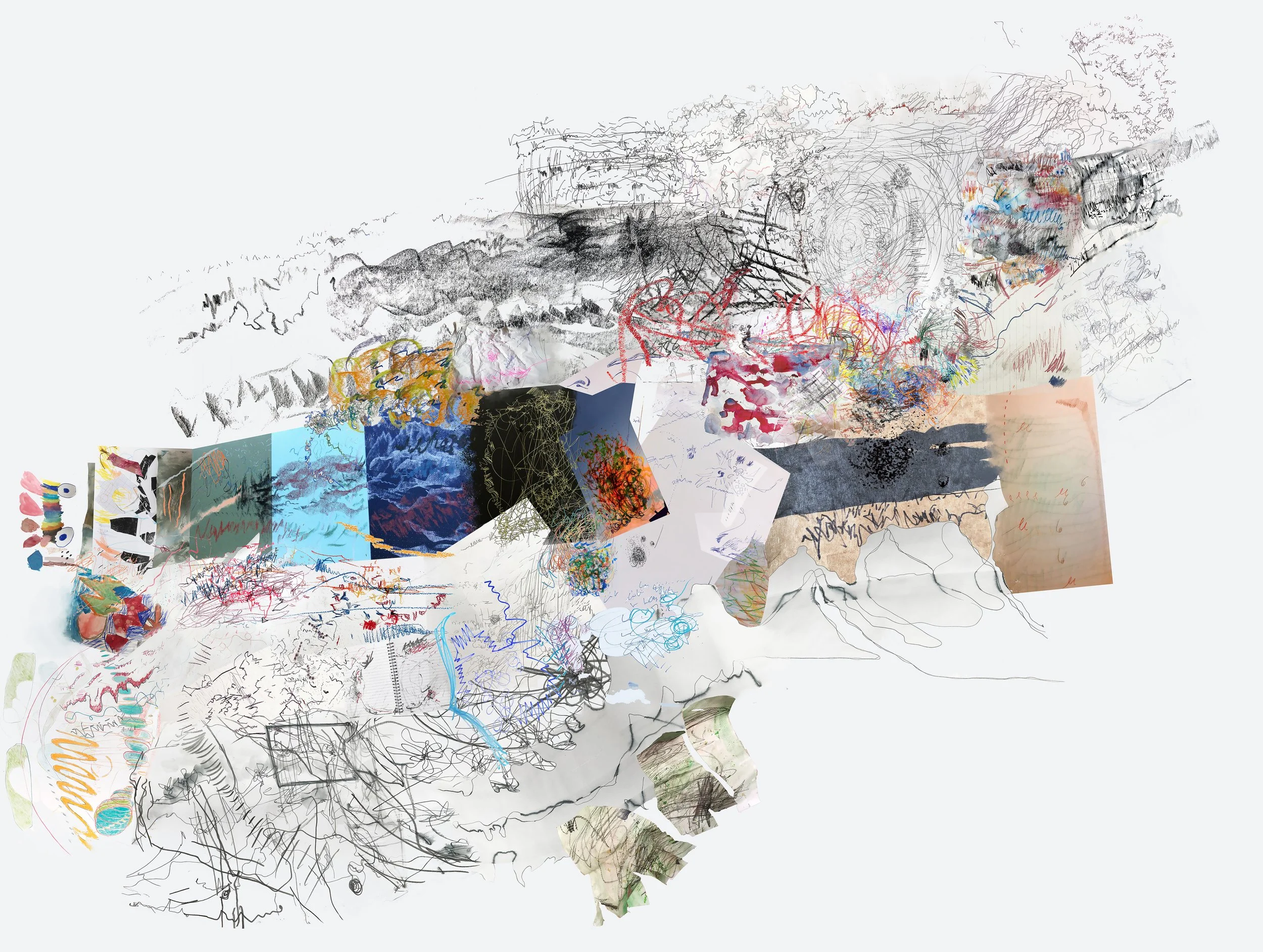Editorial
Issue 13
Walking as mapping is a theme we have covered extensively in the Livingmaps Review, especially throughout the Lines of Desire section, which has told the stories and displayed the work of walking artists ever since we started the journal. In this issue, we pick up this theme and continue to walk, but this time out and across our other sections. Along the way, we tell the stories of how walking inspires map making, how walking as mapping helps us to rethink our world, and how walking and movement draws our attention to the sensory and embodied experiences of life.
In Waypoints, Danny Bee tells the story of the Radical Walks, a walking project that guides people through London’s social and architectural history from the 1880s-1980s, a period that saw immense changes to the city as it transitioned from an industrial to an informational economy. Danny’s photo-essay blends psychogeography, personal reflection and stories from the streets with pragmatic suggestions on what makes for a good Radical Walking experience.
In Mapworks, we start with a reflection on the Sonic Landscapes of Kimbal Bumstead. Part visual and part audio, Sonic Landscapes was devised in April 2021 as an audio-visual artwork that links the dynamics of sound with our subjective experiences of place. The result is an interactive work that asks probing questions as to what it is we think we hear as we move through our environments, and how to go about mapping that. Following this, Sean Pyestock details his experiences of marking up London’s famous A-Z map as he traces his movements throughout the city. What unfolds is a personal story of how this familiar city-map relationship becomes habitual and ingrained into everyday routines.
In Lines of Desire, Clare Qualmann, Dee Heddon, Morag Rose, Harry Wilson, Maggie O’Neill report on their Walking Publics, Walking Arts research project, carried out during the Covid-19 lockdowns. They reflect on how four artists used maps and walking to document their experiences of the time. The resulting mapworks, which mix digital and analogue techniques, reflect periods of isolation and community building, but also a renewed interest in the local, as the repetition of lockdowns required these artists to think differently about what place-based art is. Following this, Hugh Nicholson joins Alison Lloyd on a walk on the Derbyshire Moors to talk about her practice as a walking artist. Along the way they discuss what a feminist perspective to walking and photography can do to retune our attention to the landscapes we move through, as well as Alison’s new solo exhibition, My Punk is Not Dead, at the TG Gallery in Nottingham.
In the Reviews section, Leah Lovett reviews Simonetta Moro’s new book, Mapping Paradigms in Modern and Contemporary Art, which introduces the concept of ‘carto-aesthetics’ to offer a new lens through which to view the poetics of mapping as an imaginative art form and practice. Finishing the issue at Point Nemo, Phil Cohen publishes his talk ‘The Map, The Territory and The Fog of War’ which he recently gave to open our ‘Cartography on the Front Line’ seminar series. In it he argues that the map-territory relation, whichever way we look at it, is always blurred by the literal and metaphoric fog of war. Click here for more details on the series.
Mike Duggan
Editor-in-Chief
November 2022
michael.duggan@livingmaps.org.uk
